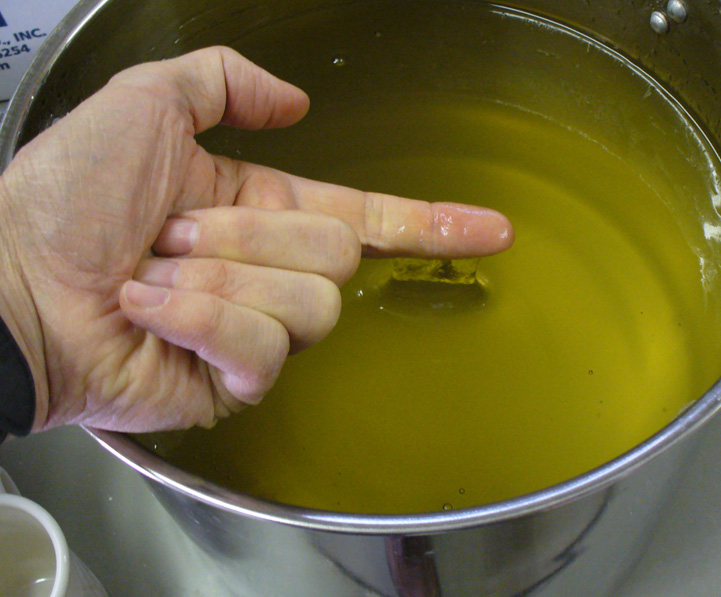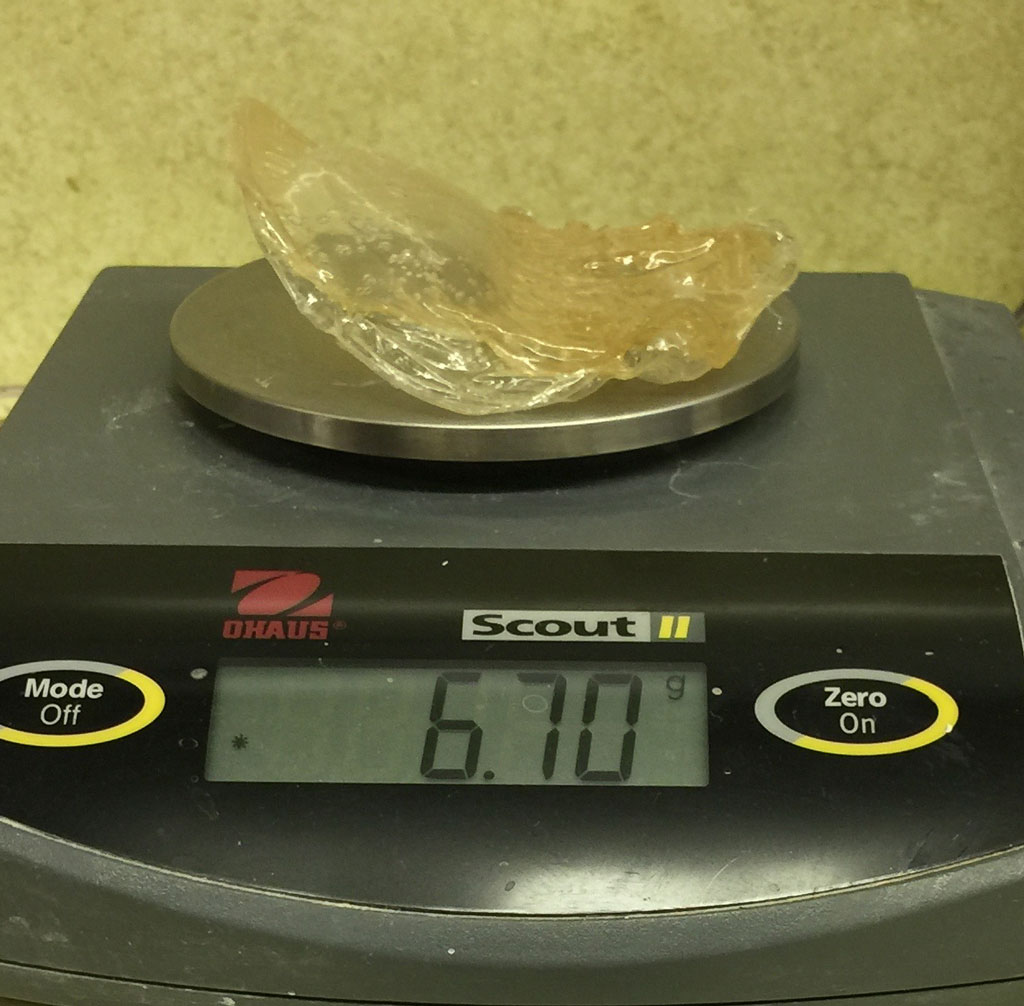| Monthly Tech-Tip | No tracking! No ads! |
How much CMC gum powder is in the gum solution you buy?
We dried out 100 ml of Laguna gum solution and were left with this residue on the bottom of the container, 6.7g. Thus, a liter contains 67g. What if you need 10g of gum to achieve a 1.5% concentration in a liter of typical dipping glaze? That would be 10/0.067=149g. That liter of glaze thus has to be able to tolerate the addition of 140g of extra water without thinning too much (keep in mind that the gum also thins it).
Using boiling water and an hour of propeller mixing to make our own gum solution the highest practical level of CMC we can reach is 3.5%, it is not completely clear why.
Related Pictures
What should the consistency of CMC gum solution be?

This picture has its own page with more detail, click here to see it.
This is CMC gum 35g/liter gum solution after it has been thoroughly hot-mixed and cooled to about 30C. As it cools further and sits it thins. Gum solutions can have a higher CMC content, up to double this, but they are more difficult to use.
Most often, gum solution is intended to augment the water when batching a recipe - not adding to a glaze slurry. This is because adding enough to have any effect on an already-mixed glaze thins it (so an equal amount or more water should first be removed). For example, consider converting a dipping glaze to a brushing glaze: Adding the equivalent of 1.5% CMC gum powder, via this gum solution, to a gallon of glaze would also add almost a liter of water. Better to blender mix in the CMC power. CMC gum is often used in consort with a gelling agent like VeeGum, enabling more water (this is done in many commercial bottled glazes).
Videos
Links
| Glossary |
Base-Coat Dipping Glaze
These are ceramic glazes intended for dipping but which contain a gum to enable them to adhere to the body better and tolerate over-layers without danger of flaking or cracking. |
| Materials |
CMC Gum
CMC gum is indispensable for many types of ceramic glazes. It is a glue and is mainly used to slow drying and improve adhesion and dry hardness. |
Got a Question?
Buy me a coffee and we can talk

https://backup.digitalfire.com, All Rights Reserved
Privacy Policy

